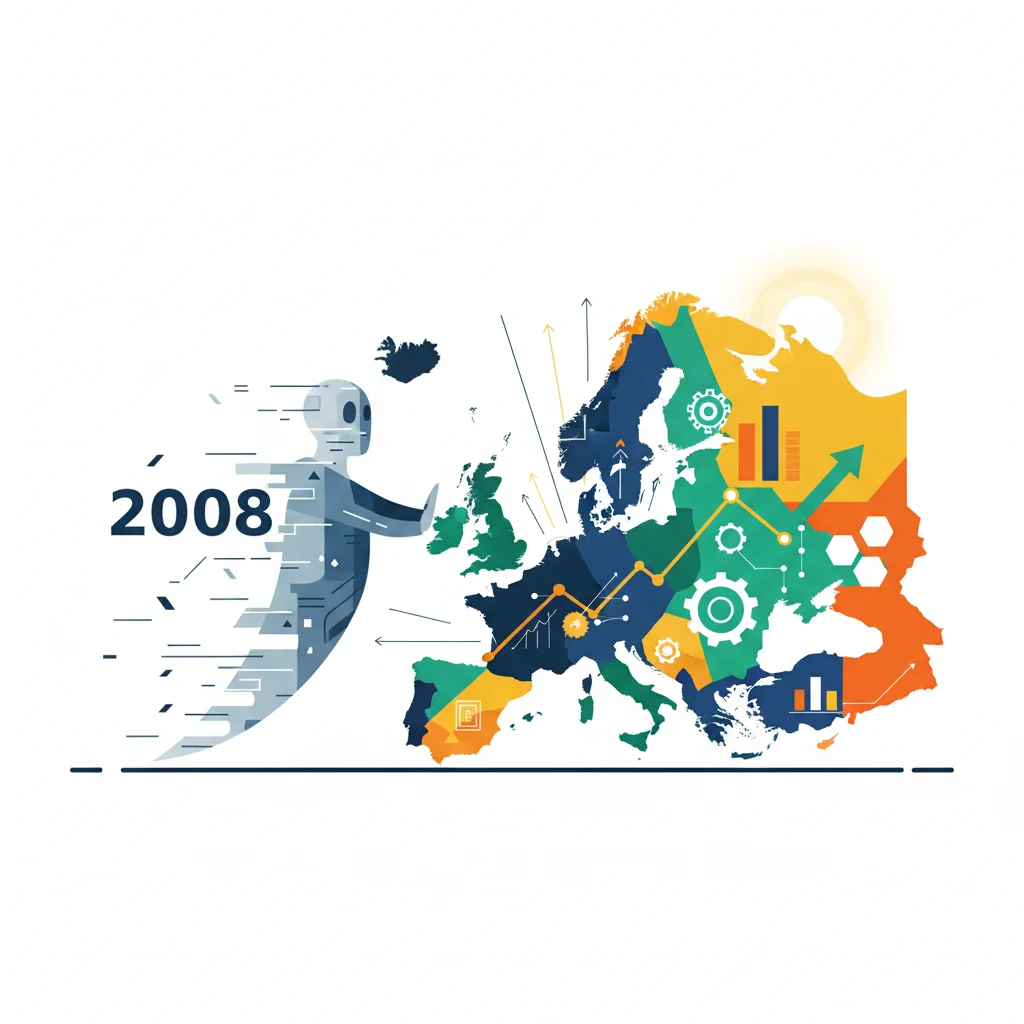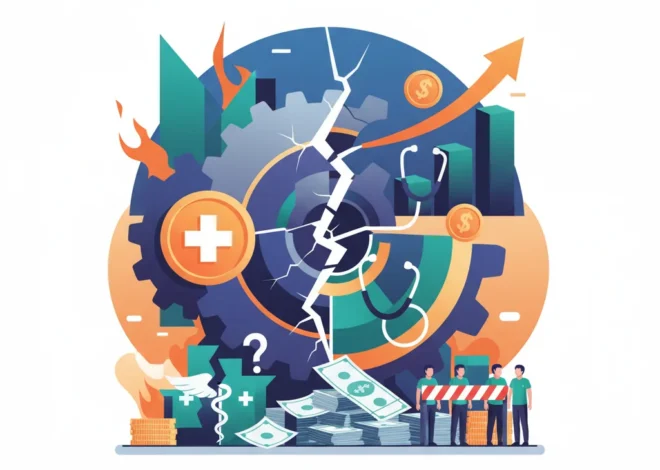
Beyond the 2008 Ghost: Why Europe’s Securitisation Market Deserves a Second Look
Mention the word “securitisation,” and for many, the mind immediately conjures images of 2008: collapsing banks, global panic, and the deepest economic recession in living memory. The term became synonymous with reckless risk-taking and financial wizardry gone wrong. For over a decade, it has been the villain in the story of modern finance. But what if that story is outdated? What if, in Europe at least, the villain has undergone a quiet, regulator-enforced rehabilitation?
A recent letter to the Financial Times from Shaun Baddeley of the Association for Financial Markets in Europe (AFME) and other industry leaders argues precisely this point. They contend that the fears surrounding European securitisation are not just unwarranted but are actively harming the continent’s economic potential. This isn’t just an academic debate; it’s a critical conversation about the tools we need to fund everything from small businesses to the green transition. It’s time to look past the ghost of Lehman Brothers and analyse the European market on its own, data-driven merits.
This article will dissect the reality of European securitisation today. We will explore how it has been fundamentally reshaped since the crisis, why its performance has been remarkably stable, and the vital role it could play in strengthening Europe’s economy.
First, A Quick Refresher: What Exactly is Securitisation?
Before we can debunk the myths, it’s essential to understand the mechanics. At its core, securitisation is a process that transforms illiquid assets into tradable securities. Imagine a bank has issued thousands of individual car loans or mortgages. These loans are valuable, but the capital is tied up for years. The bank can’t use that money to issue new loans until the old ones are paid off.
Securitisation offers a solution. The bank pools these thousands of loans together and sells them to a special legal entity (a Special Purpose Vehicle or SPV). This SPV then issues bonds—known as Asset-Backed Securities (ABS)—to investors in the capital markets. The interest and principal payments from the original loan-takers flow through to the investors who bought the bonds. For the bank, it’s a game-changer: it has converted long-term loans on its books into immediate cash, which it can then use to lend again, stimulating the broader economy. For investors, it offers a new type of investment, providing diversification and yield.
The 2008 crisis erupted when this powerful financial tool was misused, primarily in the U.S. housing market. The pools were filled with high-risk “subprime” mortgages, the complex structures were opaque, and credit rating agencies gave stellar ratings to what turned out to be toxic assets. When homeowners began to default, the entire house of cards collapsed, triggering a global contagion. This history is precisely why distinguishing today’s European market from its pre-crisis American counterpart is so crucial.
A Tale of Two Markets: Pre-2008 USA vs. Post-Crisis Europe
The central argument from industry experts is that comparing the two markets is like comparing a rickety, unregulated wooden cart to a modern, steel-reinforced vehicle with seatbelts and airbags. The design, materials, and safety features are fundamentally different. The following table illustrates some of the key distinctions:
| Feature | U.S. Market (Pre-2008) | European Union Market (Today) |
|---|---|---|
| Regulatory Framework | Light-touch regulation, heavy reliance on credit rating agencies, minimal transparency requirements. | Strict, comprehensive framework including the EU Securitisation Regulation, with direct oversight and penalties. |
| Underlying Asset Quality | Dominated by subprime and “Alt-A” mortgages, often with poor documentation (“NINJA” loans). | Overwhelmingly composed of prime-quality assets (e.g., prime mortgages, auto loans, consumer loans) with strong credit histories. |
| Risk Retention (“Skin in the Game”) | Originators could sell 100% of the risk, creating a moral hazard to issue poor-quality loans. | Mandatory 5% risk retention. The originating bank must keep a portion of the risk, aligning its interests with investors. |
| Transparency | Extremely low. Investors often had no clear view of the thousands of individual loans in a pool. | High. Issuers must provide detailed, standardized, loan-level data to investors and regulators. |
| Performance Track Record | Catastrophic default rates leading to systemic collapse. | Extremely low default rates. According to AFME data, post-2009 EU securitisations have shown remarkable resilience, even through economic stress (source). |
This stark contrast highlights that the European system was built from the ground up with the lessons of 2008 in mind. It is a product of deliberate, and often painful, regulatory reform designed to prevent a repeat of history.
Beyond the Dip: Why an XRP ETF Could Be the Next Big Catalyst in Digital Finance
The Regulatory Fortress: Europe’s “STS” Framework
The cornerstone of Europe’s reformed market is the EU Securitisation Regulation, which came into full effect in 2019. This wasn’t just a minor tweak; it was a complete overhaul. A key innovation was the creation of a new quality label: “Simple, Transparent, and Standardised” (STS).
For a securitisation to earn the coveted STS label, it must meet a strict set of criteria:
- Simple: The structure must be straightforward, without the complex and opaque layers (like CDO-squareds) that caused so much trouble in 2008. The underlying assets must be a homogenous pool of loans, not a confusing mix of different asset types.
- Transparent: As mentioned, issuers must provide granular, loan-level data to investors. This allows for genuine due diligence and removes the “black box” element. Investors can see exactly what they are buying.
- Standardised: The underlying loans must be originated with sound underwriting standards, and the documentation and processes must follow industry best practices, making them easier to analyse and compare.
This STS framework, combined with the mandatory 5% risk retention rule, has fundamentally realigned incentives in the banking sector. The “originate-to-distribute” model, where banks made loans with the sole intention of selling them off and washing their hands of the risk, has been replaced by an “originate-to-share” model. Banks now have a vested interest in the long-term performance of the assets they securitise.
Furthermore, no regulation is a perfect shield against future crises. What happens during a prolonged, deep recession that significantly impacts the prime borrowers who make up today’s asset pools? While the system is built to be resilient, it hasn’t been tested by a true, multi-year economic downturn of the magnitude of 2008.
Looking ahead, the next evolution in this space will likely be driven by financial technology. Imagine a world where blockchain provides an immutable, real-time ledger of every single loan in a securitised pool. This could offer ultimate transparency, reduce administrative costs, and make the trading of these securities more efficient. This fusion of robust regulation and cutting-edge fintech could be the final step in fully restoring trust in this vital financial instrument.
The Economic Imperative: Why a Healthy Securitisation Market Matters
This isn’t just a niche topic for finance professionals. A functioning securitisation market is a critical engine for economic growth. When banks can securitise loans, they free up their balance sheets to lend more to the real economy. This is especially vital in Europe, where small and medium-sized enterprises (SMEs) are the backbone of the economy and are heavily reliant on bank lending.
A revived securitisation market is also a cornerstone of the EU’s long-standing Capital Markets Union (CMU) project. The goal of the CMU is to create a single market for capital across the EU, reducing the continent’s over-reliance on bank lending and creating more diverse funding sources for businesses. According to the European Commission, a fully integrated CMU could mobilize significant private investment to help companies grow (source). Securitisation is a key channel for connecting these capital markets with bank originators.
Moreover, in an era focused on sustainability, securitisation can be a powerful tool for green finance. Banks can pool green loans—for electric vehicles, energy-efficient home renovations, or renewable energy projects—and issue green bonds. This attracts a new class of ESG-focused investors and funnels much-needed capital towards the green transition.
The Investor’s Perspective: Navigating Risk and Opportunity
For those involved in investing, the European securitisation market presents a different landscape than it did 15 years ago. The risks haven’t vanished—no investment is risk-free—but they are now more transparent, quantifiable, and manageable. Just as an investor wouldn’t buy a stock on the stock market without reading a company’s financial reports, they must approach ABS with a similar level of diligence.
Today, due diligence involves:
- Focusing on STS-labelled products: This label acts as a powerful quality filter.
- Analysing the originator: The credibility and underwriting standards of the originating bank are paramount.
- Scrutinising the underlying assets: The granular data now available allows investors to model performance under various economic scenarios.
- Understanding the structure: Investors need to know where they sit in the “capital stack”—whether they hold the safest senior tranches or the riskier junior ones that take the first losses.
For institutional investors, high-quality European ABS can offer attractive yields and diversification benefits compared to similarly-rated government or corporate bonds. It represents a move from blind trust in ratings to empowered, data-driven investment decisions.
Japan's Demographic Dilemma: Why More Stimulus Won't Fix a Shrinking Economy
Conclusion: Time for a Data-Driven Reassessment
The shadow of the 2008 financial crisis is long, but it shouldn’t permanently obscure our view of the present. The European securitisation market of today is not the architect of the last crisis; it is a direct, regulated response to it. Through stringent rules, a focus on high-quality assets, mandatory risk retention, and unprecedented transparency, it has been fundamentally reformed.
As industry experts like Shaun Baddeley argue, the persistent fear surrounding this market is now a liability. It stifles a crucial funding channel that Europe needs to support its businesses, drive innovation, and finance its green ambitions. Moving forward requires a nuanced conversation based on the current data, not on decade-old trauma. While caution is always a virtue in finance, allowing outdated fears to dictate policy and investment strategy is a luxury Europe’s economy can no longer afford.


